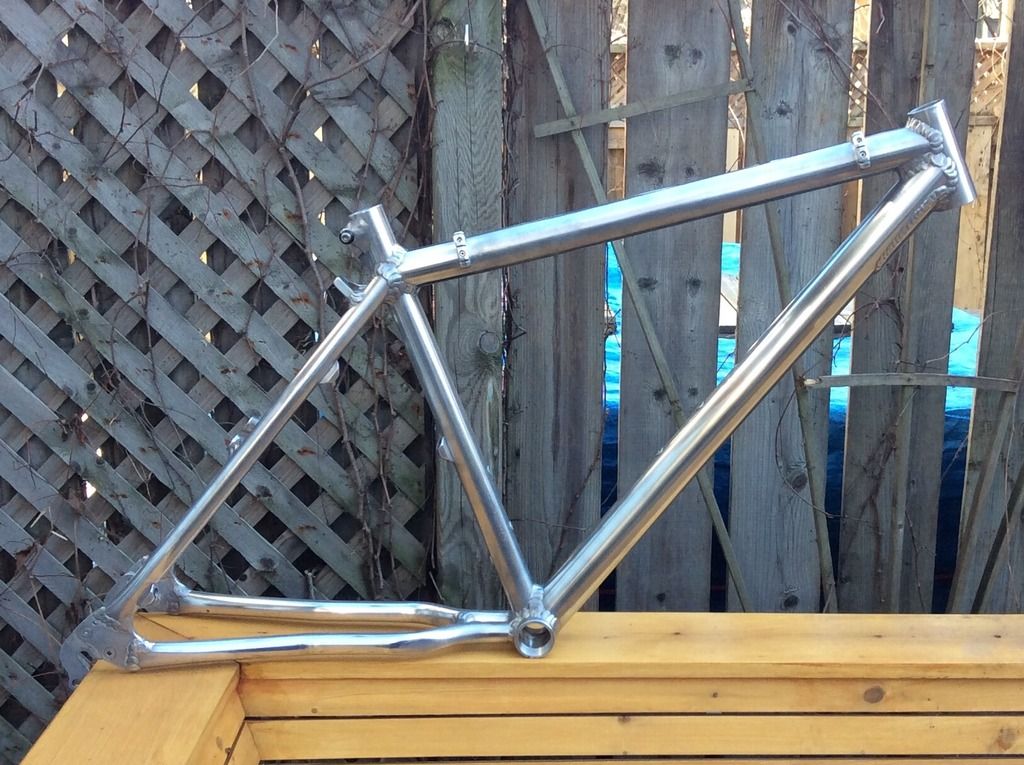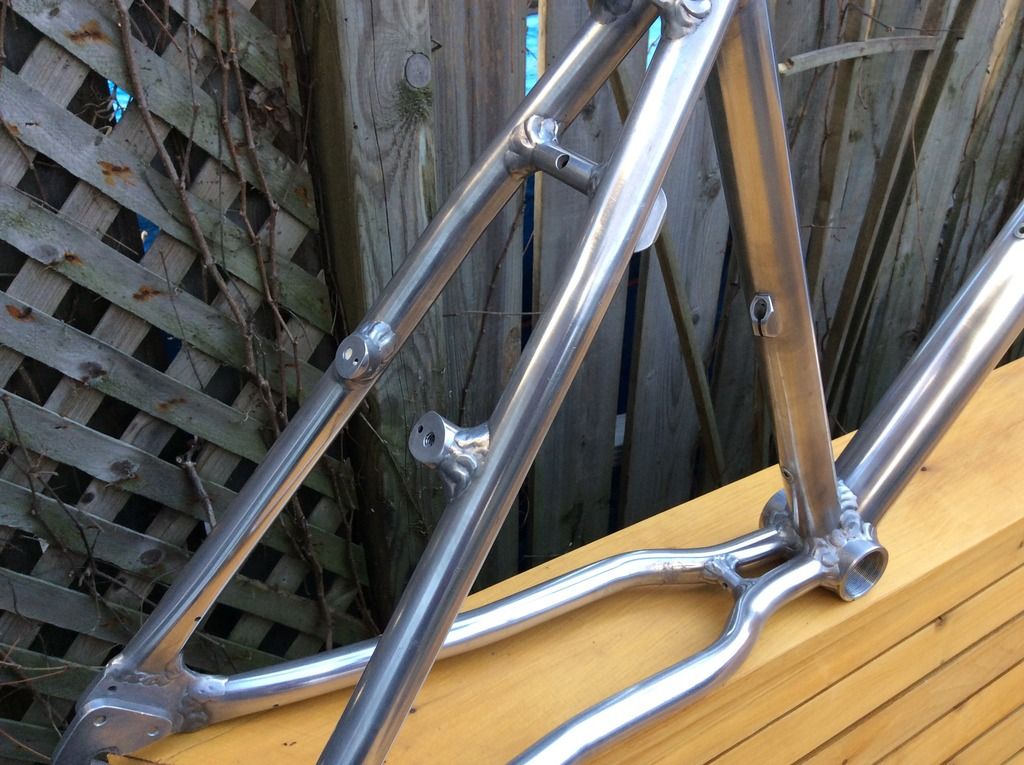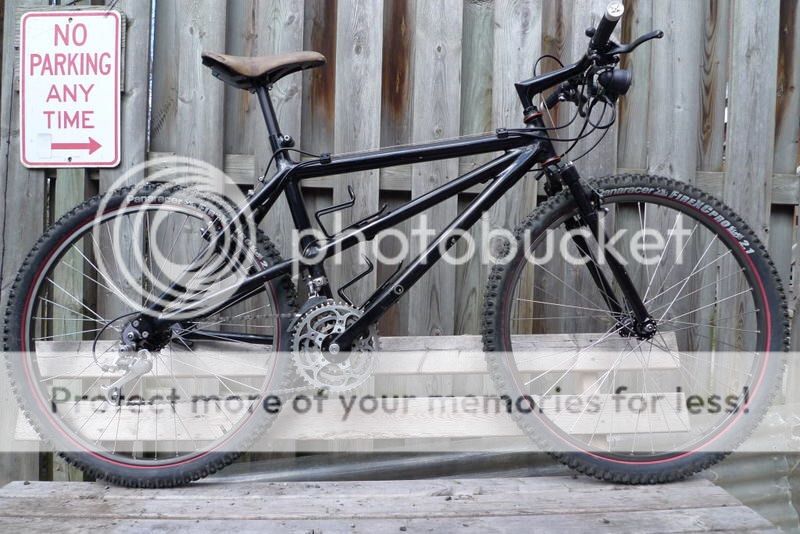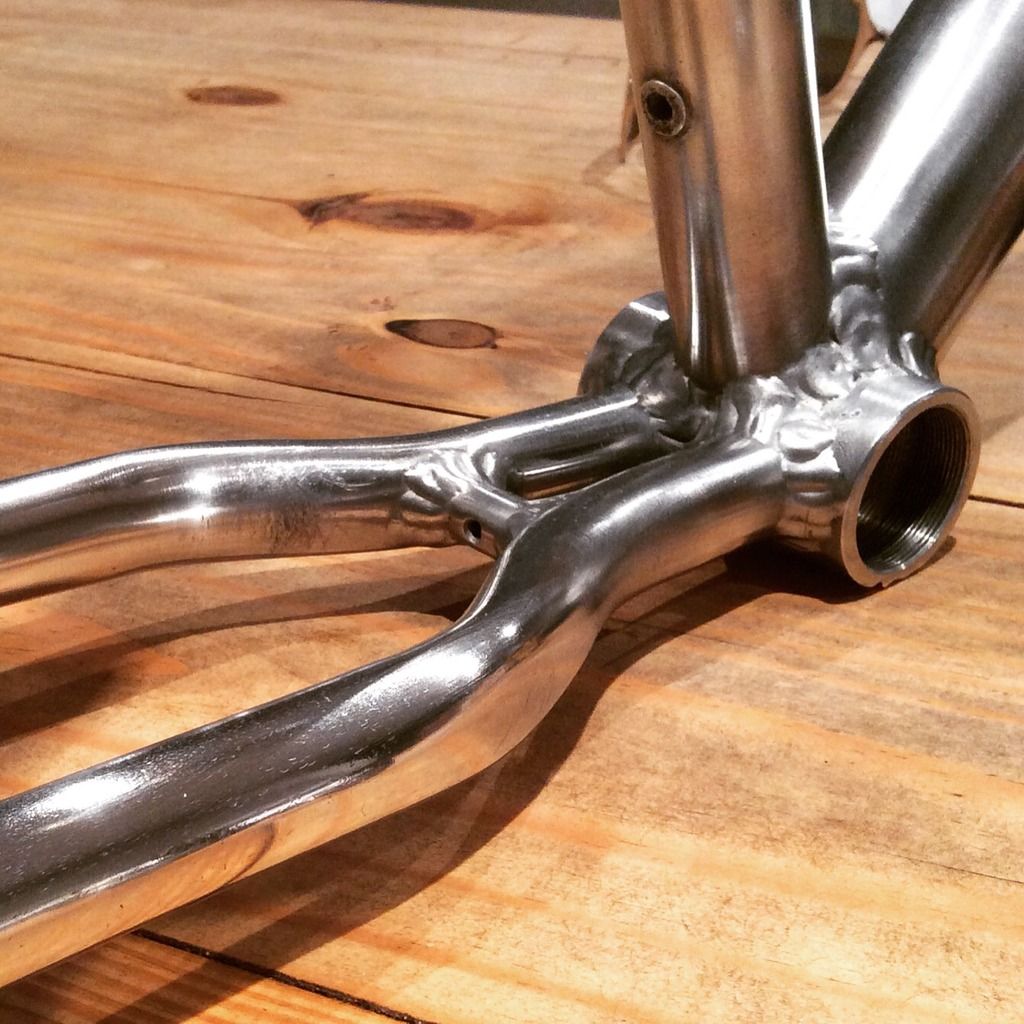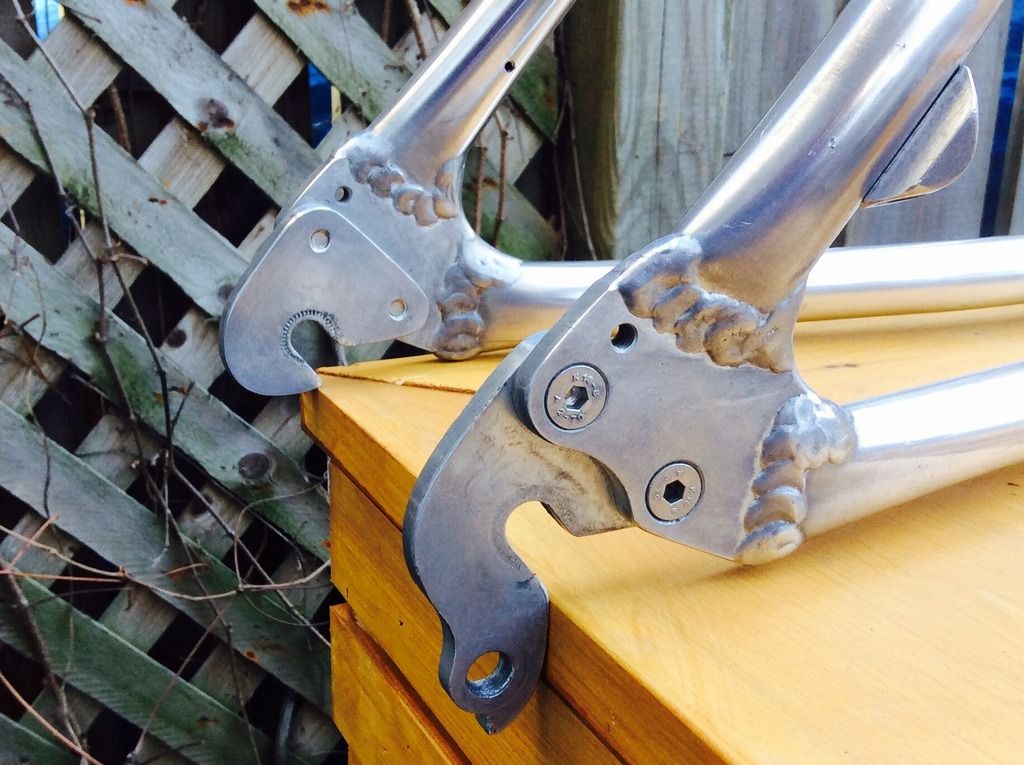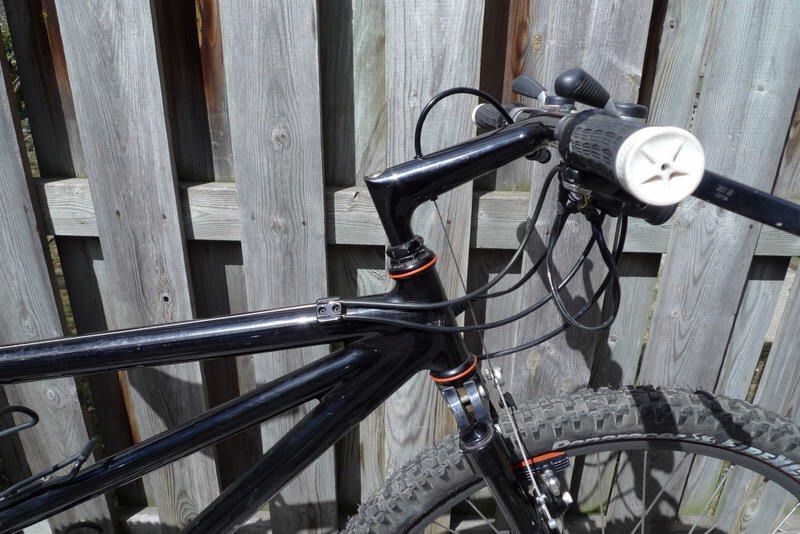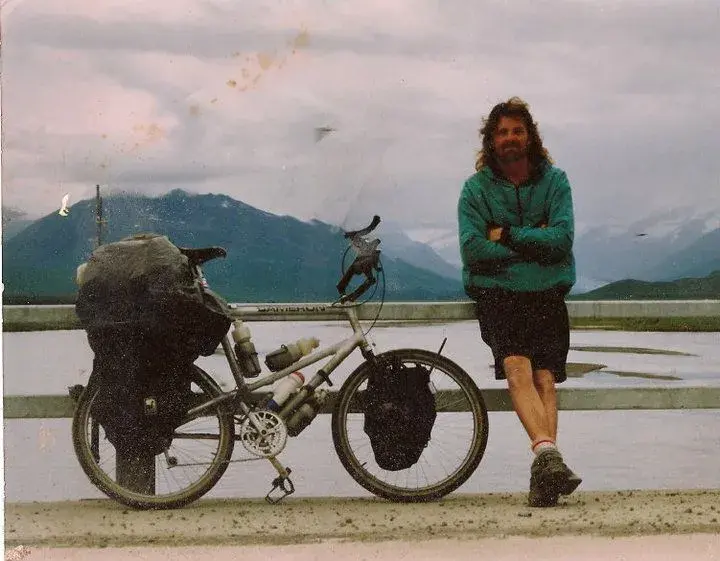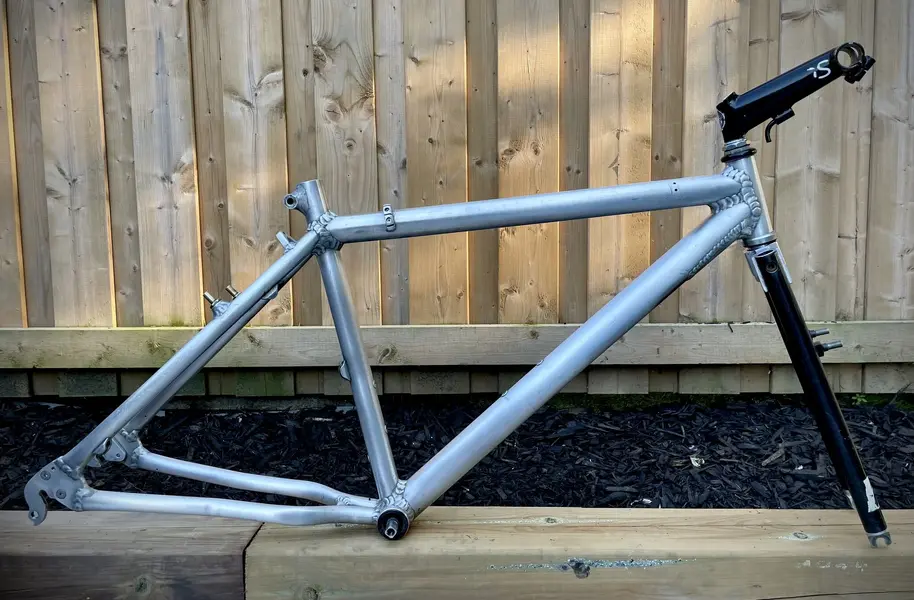I found this thread after a friend who has a Cameron in his basement asked me about it. Thanks for the scans - I couldn't quite read it from the images, but these days we have AI, which was able to give me the text. Posting it here for anyone else interested.
CANADA'S CAMERON FS
A new bike from Toronto
(Header: MOUNTAIN BIKE ACTION TEST)
MBA tests a wide assortment of mountain bikes each year. Bikes from big companies, bikes from little companies and bikes from framebuilders so tiny that only we and their mothers know they exist. Many people wonder how the MBA test crew selects the bikes we test. Usually, we follow a comprehensive plan that exposes hardcore off-road riders to the most innovative, creative and popular bikes made. We often group designs to show their strengths, shortcomings and encourage comparisons. MacPherson Struts, rigid bikes, hardtails, suspension designs and linkage bikes have all been fodder for our testing cannon. We aren't concerned with whether or not a bike company advertises with us—we test bikes, not ad budgets.
What this means is that a framebuilder who hocked the family home to build his dream bike can get a shot at stardom in MBA.
Occasionally, a new bicycle appears on our doorstep like an orphaned child. If the bike looks cool, what the heck, we are willing to forgo our master plan and stuff the orphan into the next issue of MBA. The fully suspended Cameron was just such a surprise. The box had a small note from a Toronto, Canada, bike shop called Cycle Logic on which was scribbled, "One of our friends makes these bikes. Could you take a look and tell us what you think?"
(Photo Caption - Page 1)
Skinning the cat: Designed by a 55-year-old engineer, the Cameron proves that there is more than one way to make a MacPherson Strut suspension bike. The Cameron adapts a plethora of concepts from virtually every rendition of Mac bikes into a seamless whole.
ABOUT THE CAMERON
Few frame builders in the dirt world spend the time to perfect the surface finish of their creations beyond what is reasonable. The intended use of off-road bikes is a rough-and-tumble business. Exposed TIG welding and unsmoothed fillet brazing is the accepted rule of dirt bike construction. Not so with Harv Cameron (a 55-year-old mechanical engineer).
His oversized aluminum tube frame must have taken weeks of sanding and file-work to complete. Every junction of the TIG-welded structure was smoothed into a seamless whole, then brushed into a silvery luster. All we could think was how lonely it must be during those long Canadian winters to inspire this level of finish.
The frame's front section had a drastically sloping top tube for improved standover height. To support its seat tube, a strut ran from midway on the top tube to the seat clamp area. The swingarm pivot was reinforced by a short tube above the bottom bracket area, which placed the swingarm pivot at the same height as the middle chainring (to eliminate pedaling input from the suspension). The bike's swingarm was elevated at the front pivot and rear dropout. A short MacPherson Strut drove a top tube-mounted Noleen shock from a point about five inches forward of the rear axle. The setup was vaguely similar in concept to the Pro-Flex 986. Cantilever brakes were mounted to the demi-strut and were actuated off-center from a housing stop on the left side. The stubby strut laid almost parallel to the swingarm.
Front suspension duties were delegated to a Girvin linkage elastomer fork. The Girvin fork used an integrated stem as an upper pivot for its shock mechanism. The frame's unusual layout blended well with the "alternative"-looking Girvin front end. Past experience had the MBA test crew wondering if the hydraulic rear end would be compatible (and balanced) with the elastomer front damper.
NUTS 'N BOLTS
The group? Shimano XTR, of course! The Cameron had a full XTR drivetrain. Rear gearing was on the tall side. The 11-28 cogs were best suited only for the fittest climbers. Brakes? Dia-Compe 987s front and rear. Hoops? XTR hubs, Specialized XL21 rims, 14/16-gauge spokes and Ritchey Z Max 2.1 tires graced both ends. Driver's compartment? Ritchey Force Lite bars, a real-life Sella Italia Ti-rail Flite saddle and a Kore alloy seatpost.
Frame geometry was right down the middle: 71-degree head and 73.5-degree seat angles. The chassis had 16.25-inch chainstays, 12.25-inch bottom bracket and a short 22.75-inch top tube. Our 19-inch-size frame (center to top of seat tube) had 2.25 inches of rear suspension travel and two inches up front. The exaggerated standover clearance that the dropped top tube afforded actually set the bike's size closer to an 18-incher, but its tallish, ten-degree, 135mm stem perched upon risers that lifted the handlebars out of range for short- to medium-size cyclists. Available frame sizes are 16.5, 18, 19, and 19.5 inches. The 19-inch bike hit the scales at 27 pounds.
The retail price of the TIG-welded version is $1900, while the fully finished, filed and sanded frame is $2650. For more info call Cycle Logic at (416) 488-2453.
(Photo Captions - Page 2)
Odd man out: To fit the Girvin Vector fork on the Cameron's short head tube, spacers had to be added. Every test rider wished for some relief in the height department. A zero-rise or even negative-rise stem would have helped the Cameron. On the plus side, the Vector fork steered accurately and held a line with poise.
Over the river: The high-arching, symmetrical swingarm gives ample room for large chainrings should anyone consider racing high-speed downhills. However, torsional flex might give kamikaze pilots some grief through high-speed turns.
Room to grow: This Canadian-built bike is no stranger to muddy conditions. Even with a 2.1" rear tire, the Cameron came through with flying colors in the tire clearance department. Unfortunately, the asymmetrical brake cable routing did not provide as much clearance. It rubbed occasionally on the rear knobs.
WHAT DID WE THINK?
Most of the MBA staff was too busy fondling the smooth junctions of the Cameron's frame to take notice of its design aspects. Those who did (read: Felix Unger) questioned the compact rear section’s rigidity. The fact that the compression strut and swingarm tubes were parallel means that both would be weak against twisting forces (torsion).
On the trail, the Cameron’s rear end was surprisingly stiff, although some flex was apparent during hard efforts in and out of the saddle. Under power, the rear suspension remained fully active, even in the granny gears, which was a boon in the traction department. Steep or prolonged climbing had us seriously craving bar ends. Without climbing aids, full suspension bikes are not too much fun. Another uphill snafu was the tendency of the front derailleur to rub the tire in the granny position. The Cameron needed a wider bottom bracket axle to space the XTR cranks further outboard to fix that problem.
In the steering department, the Cameron was completely trouble-free. This bike was the first mount we have tried that was felt completely compatible with the Girvin Vector fork. Our doubts about the mix-and-match of oil-damped shock and bumper fork were justified. Over big bumps the front end felt bouncy. Steering was neutral, fast or slow, and the front wheel could be lofted over obstacles easily without a feeling that it was too light on steep climbs. Its overall feel was midway between a good solid downhill geometry and an East Coast woods bike. Over fast, rough terrain, a small amount of noticeable rear-end flex caused the bike’s tail to wander a bit. This was more pronounced on fire road turns.
(Photo Captions - Page 3)
Balancing act: One of the most important elements of a full suspension bike is front/rear balance. The Cameron’s front suspension is not well mated to the supple rear end. This imbalance causes the rear end to drift in the turns and the front end to exhibit a bouncy reaction to stutter bumps.
Mini-MacPherson: Two welded-on aluminum ears, midway up the swingarm, drive the MacPherson Strut halfway up the swingarm. The degree to which these mid-mounted Horst Links lessen chain torque and brake-induced lockout is suspect. Current theory is that the rear axle should be mounted on the strut, not the swingarm.
SOOOO... EHHH!
The Cameron surprised some MBA test riders. It was a fun bike to ride. We think there is some room for improvement in the rigidity arena, but it’s a good first effort. The bike’s looks garnered praise everywhere we stopped. We could have charged people just to touch the Cameron. Lowering the handlebars, adding bar ends and putting on bigger rear cogs would be a step in the right direction. Add a bit of stiffness to its swingarm, and the Cameron would be a very cool Canadian.








